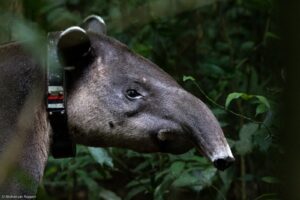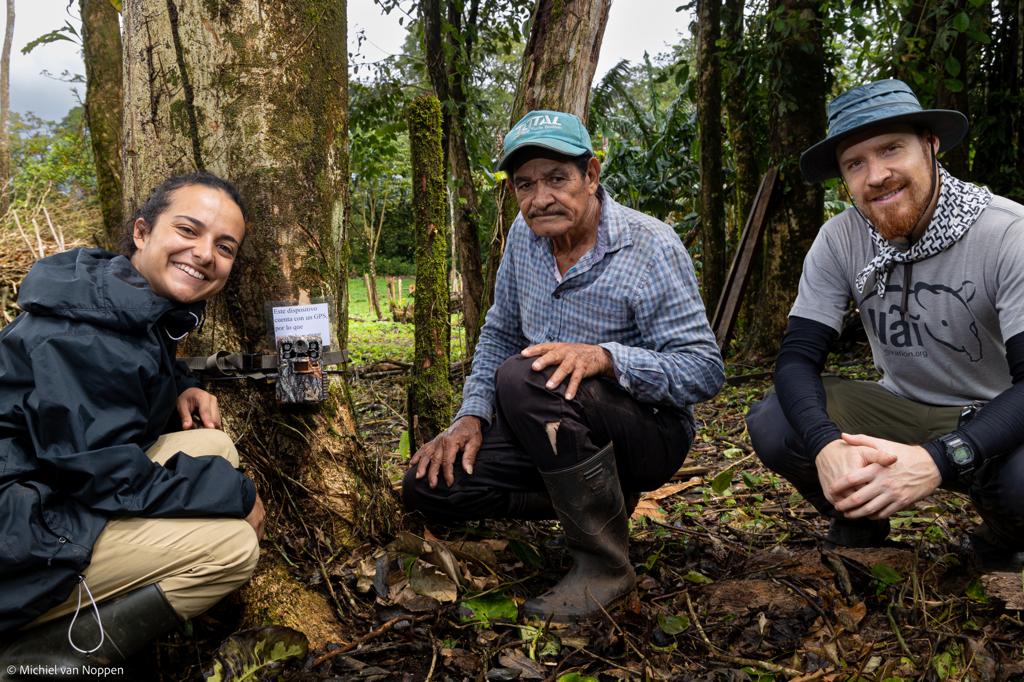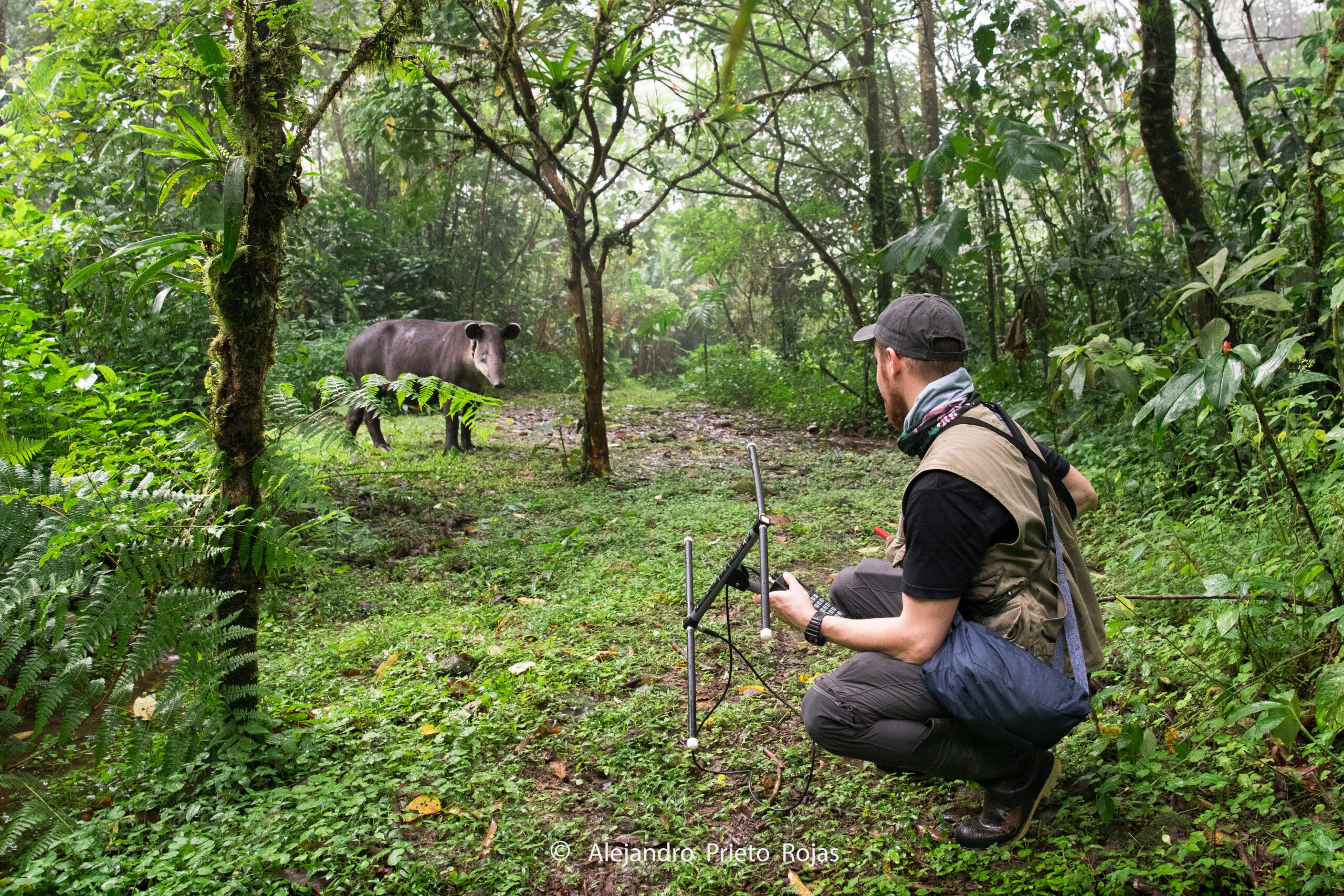
Jorge Rojas is protecting living fossils.
Those “fossils” are Baird’s tapir, an endangered herbivore that looks like a small rhino, with a nose that resembles a short trunk and lives in Central and South America. As a remnant of the megafauna, they roamed the earth alongside mastodons and sabertoothed tigers during the last ice age, but now, only around 5,500 remain in the world.
And these tapirs are an important part of their environment. They can eat more than 200 species of plants, helping clear undergrowth in forests and promote new growth.
“They’re really important for seed dispersal, and that’s why they are known as the gardeners of the forest,” Rojas said.
As a doctoral student in the University of Georgia Warnell School of Forestry and Natural Resources, Rojas is making sure the populations in Costa Rica are protected as they coexist with their human neighbors.
Community effort
Rojas’ connection to tapirs goes back to his veterinary roots. While in veterinary school in Costa Rica, a biologist brought in two tapirs who had been killed in the same day. They died as the result of a vehicle collision, an unfortunately common occurrence, Rojas said, and he felt pulled to learn more and to protect these gardeners of the forest.

He started to work with his friend and colleague Esteban Brenes-Mora, a founding member of the Costa Rica Wildlife Foundation and a conservation scientist. This made Rojas part of an interdisciplinary team seeking new solutions for conservation. Then, he focused his veterinary school thesis on fecal bacteria antibiotic resistance profiles on free-living tapirs.
And most recently, he connected with UGA professor of wildlife disease Sonia Hernandez, who conducted research on tapirs and conservation in the mid 1990s. Back in 2019, he applied to Warnell’s doctoral program and now, through his dissertation, Rojas aims to improve conservation methods that can protect Baird’s tapir while also protecting farmers’ crops and livelihoods.
“You’re living on their habitat, your house and farm are part of their habitat,” Rojas said. “But one tapir can raid one hectare [about 2.47 acres] of crop, of a bean plantation, in one night. That can leave a farmer without much of their income throughout the rest of the year.”
In some situations, farmers have killed tapirs that invaded their land. But Rojas and his team are introducing other mitigation strategies, including electric fences and monitoring to better understand of tapirs and their habits.
“Part of this research’s success comes from going to the farmers, listening to them and empowering them.” Rojas said. “We’re working to quantify specific damages, implement mitigation strategies and then track the tapirs to see if they continue to come back to the crops or not.”
They have been able to train community members to use tracking apps on smartphones and camera monitoring systems in order to gather data on tapirs and their movements.
“This collaboration is really important to me because I want people to be empowered to do the monitoring themselves,” Rojas said. “That’s one of the key points in this study.”
Prime environment
Conservation of the Central American tapir can be difficult throughout the greater region, Rojas said, but Costa Rica’s historical promotion of environmental conservation means it is well suited to his research efforts. Many citizens are also enthusiastic about helping with conservation efforts and protecting tapirs.
“In this area, you have a unique behavior that’s changing the paradigm of a typically elusive species,” Rojas said. “There are some females that are getting very close to residences because they are growing used to people. And what’s more important is that there are families protecting them with their own power and resources.”

These families are not domesticating tapirs, and Rojas is quick to clarify that. In fact, a lot of the training and resources his team provides discourages feeding tapirs directly, in order to keep them self-sufficient. The bond between tapirs and humans, however, is a positive step in conservation.
“There are reports of five tapirs wandering together, feeding together in one hectare or something like that,” Rojas said. “So even our colleagues from other parts of the region are really surprised to hear that. That density may be a good indicator that the population is recovering, for which, we are in the process of proving it with citizen-science, camera-trap and radiocollar data.”
Dedication to conservation
Support from the university’s Integrative Conservation Ph.D. Program—UGA ICON—has also helped Rojas develop more than just his research skills. As part of the Center for Integrative Conservation Research, ICON provides theoretical training, internship opportunities, communications training and collaborative research projects.
In addition to his foundation in veterinary medicine, which aids in anesthetizing tapirs so that they can be fitted with a tracking collar, he has built community relationships and policy-related skills.
“It was the best choice I could have made to enroll in this program,” Rojas said. “I need to have a battery of skills that will allow me to do tapir conservation and research with and for communities. This program provides me with skills needed to train the public, but also in lobbying, so that I can advocate for our needs.”
Rojas is close to completing his field research in fall 2023 and is set to graduate in spring 2024.


